During the Great War of 1914-1918 the operational level was virtually non-existent, meaning that there was officially no linking pin between strategy and the tactical battles, and consequently, the end-ways-means-risks were not aligned. Generals like Falkenhayn, Haig, and Ludendorff were convinced that a tactical success might initiate a strategic triumph. British military leadership in the Middle East showed another picture. There, based upon his experiences at the Western Front, general Edmund Allenby understood that the strategic leader could not attain complete knowledge of the many facts influencing the theatre, including the battlefield. Allenby’s approach was a precursor of a campaign plan, while a German operational level never even came into being.
Colonel E.A.H.G. Caelen*
Officers learn by studying, and during exercises and operations they learn by doing, meanwhile gaining experience. By studying military exploits of the past they learn from the mistakes of others. A study of the Great War 1914-1918 offers the officer of today a unique opportunity to learn about strategic leadership in relation to innovation, alignment of the end-ways-means-risks, a dynamic and complex environment, and the lack of an operational level. Contemporary strategic leadership faces almost the same challenges as leaders faced during the Great War. This article focuses on the connection between strategy and tactics: the operational level. It also pays attention to how military commanders acted at the operational level by taking a closer look at their roles and responsibilities. Although the American Civil War (1861-1865) and the Russian-Japanese War (1904-1905) demonstrated a first glimpse of this operational level, whereby the American and Russian military leaders commanded huge masses of forces, the operational level developed gradually over time. In the Interbellum Russian military thinker Alexandr Svechin labeled it as the operational level. And during the 1970s the Americans, after the war in Vietnam, reintroduced the name operational level and from that moment on many NATO countries also adopted the term.[1]
Today the operational level is considered as a very important link between the strategic and tactical level. The commander and his headquarters at operational level translate the political guidance and directions into feasible military plans and orders.[2]
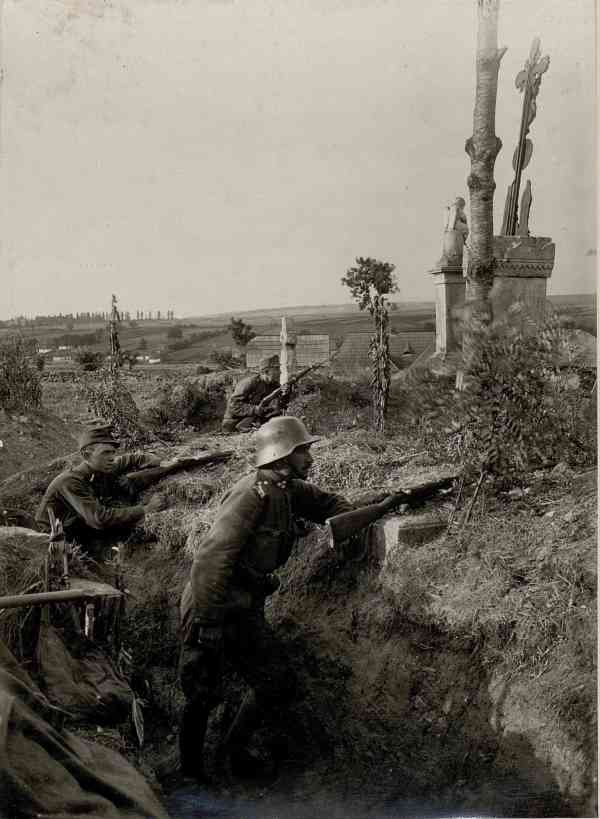
Members of the Korps Hofmann in Galicia: during the Great War, German military leaders sought to strengthen failing Austria-Hungarian divisions by coming up with tactical solutions. Photo National Library of Austria
This article deals with the Great War during which the term ‘operational level’ did not exist. The level itself was already there although the military leaders were not aware of it and did not create such a level with all its consequences. During the Great War, the generals were looking in the same way as Janus, the two-headed God, to the past and the future. The historical perspective showed generals, who believed that a successful battle was the culmination of all the work and the key to strategic success, and consequently these generals interfered in almost everything, even in the smallest detail. From the future perspective, the generals looked out towards multiple battles in several theaters, reducing the value of one single battle to virtually zero unless it supported the goals in a specific theatre. These generals had a broader scope, but were a minority, and did not determine the course of the Great War. In order to make the struggle with a lack of the operational level during the Great War well reflected in this article, subjects as the generals at the Western Front, the concept of ‘fighting just another battle’ both at the Eastern as well as the Western Front in Europe, the British Campaigns in the Sinai and Palestine, and the lessons learnt will be dealt with.
The poem Dulce et Decorum Est pro Patria Mori written by the British lieutenant Wilfred Owen demonstrates the miserable life in the trenches on the Western Front in the Great War.[3] Indeed, life in the trenches was dreadful because the artillery barrages, the gas attacks, the flamethrowers and lack of progress exhausted the soldiers, most of the time huddled in their primitive self-dug shelters. Life for the strategic military leaders was different. Although they comfortably lived at a distance from those trenches, they endlessly faced new challenges caused by unexpected turns in their plans, failures made by their Allies, and limited results of newly-introduced technology.
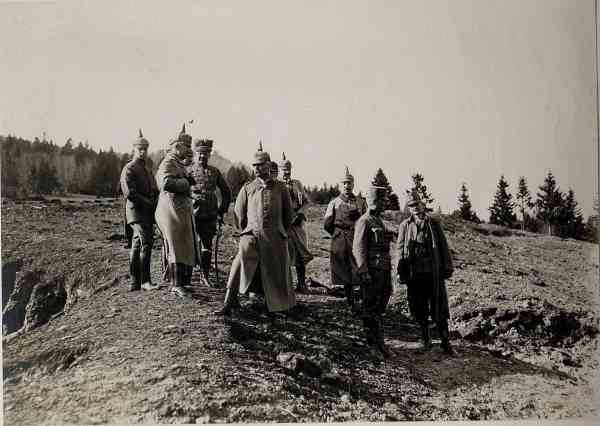
Like other German generals, Erich von Falkenhayn (centre) tended to act on the tactical level. Photo National Library of Austria
In Western Europe, the Great War started and terminated with maneuver, but the nature of maneuver in 1914 was systematically different from that of 1918. In 1914, an adjusted version of the German Schlieffen Plan showed Napoleonic characteristics, while the last Allied offensive in 1918, almost four years later, unveiled a kind of warfare today known as ‘all arms warfare’ with the deployment of tanks, airplanes, and with new concepts of operations for infantry and artillery.[4] The strategic military leaders, often criticized for poor leadership, were responsible for the implementation of these innovations that finally led to the end of the Great War. The innovations involved trial and error, and it is important to realize that these leaders achieved these innovations in the context of trench warfare, which was the result of the in nature highly mobile German troops carrying out the Schlieffen Plan that came to a halt. After being defeated in the Marne Valley in September 1914, the Germans tried to race to the sea, a maneuver to conquer the Channel ports to create a favourable position with regard to continuing the war against the British Empire, but they did not succeed.[5] Moreover, neither maneuver produced any innovations. Conversely, attrition did.
The Generals at the Western Front
This first section shows the struggles of the generals in Europe on both sides. During the Great War the operational level was virtually non-existent, meaning that there was officially no linking pin between strategy and the tactical battles, and consequently, the end-ways-means-risks were not aligned. General Helmuth von Moltke the Younger’s three roles and responsibilities clarify this point. First, he was the army’s strategic advisor to the German Emperor. Second, he was Chief of the General Staff and gave the army strategic directions and he could also allocate resources to support these directions. He was the overall commander, who was responsible for the Western as well as the Eastern Front. Third, he was the commander of the Western Front, and consequently he had the final responsibility for the implementation of the adjusted Schlieffen Plan. These three roles led to conflicting interests, but never initiated a professional debate about strategy, illustrated by the following example. On 30 August 1914, Moltke stated that the Emperor could postpone mobilization and, consequently, preserve the peace. But Moltke changed his mind, when he contemplated the German endeavours in the West. A quick capture of the fortresses of Liège would be a key to success, so it would be a necessary step towards a successful campaign in the West. ‘So why don’t we try it,’ was Moltke’s main thought.[6]
The connection between strategy and tactics was rarely recognized during the war, and consequently the fusion of roles and responsibilities as shown by Moltke dominated, which prohibited a professional discussion about the German strategy. It is noteworthy that the strategic military leaders predominantly focused on the tactics, while they most likely already knew that a tactical victory, in itself, would not support the overall strategy. A tactical victory had no significance as demonstrated in the following examples. During the end of 1915, general Erich von Falkenhayn, as Chief of the German General Staff, examined the Germans’ strategic position on the Western Front to reconsider the German plans. He subsequently focused on the tactical operations, and the deployment of Storm Troopers for the fights at Verdun.[7] His successor, general Erich Ludendorff, showed similar conduct during Germany’s offensives of 1918. Ludendorff particularly acted on the tactical level at the Western Front. He lacked a profound political and military strategic overview of Germany’s stance and position in Europe.[8] This shortcoming was not merely limited to the German General Staff. The British military leadership on the Western Front displayed the same adoration of tactical challenges. On the eve of the Battle of the Somme in 1916, general Douglas Haig was Commander of the British Expeditionary Force, and the connection between the strategic level in London and the tactical level, being the British Armies in France and Belgium. Furthermore, Haig was the counterpart of the French and Belgian strategic leaders. Comprehending this responsibility, Haig was principally concerned about the detailed planning of the divisions, bypassing the higher tactical level. Consequently, he did not use their abilities and transferred the higher tactical level, which was comparable to the modern operational level, to just an administrative layer.[9]
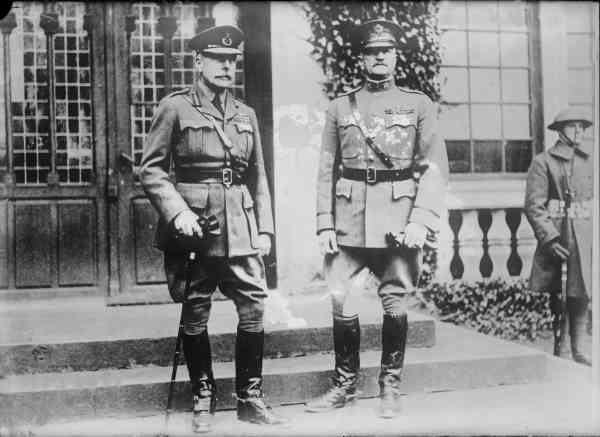
British general Douglas Haig (left) transferred the higher tactical level, which was comparable to the modern operational level, to just an administrative layer. Photo Library of Congress
At the beginning to the 20th century the military strategic leaders were not blind to the changing character of war; a change that occurred rapidly and simultaneously in many different echelons. Already in 1909, Moltke realized that a decisive battle was unrealistic because of the enormous size of the armed forces amplified through strategic alliances, the technological developments of weapons, and also because of the diversity of the theaters.[10] To elaborate on this point: the British generals commanded an army which varied from 150,000 professional soldiers in 1914 to an army of almost two million conscripts and regulars in 1918, including all supporting elements. Moreover, tanks, airplanes, and several other weapon systems entered the war. Another point to take into consideration is that these leaders grew up in a period when social Darwinism was a major theme in normal life, with the underlying idea that suffering and massive fatalities represented a significant part of the Great Power’s struggle.[11] So, the requirements set for these leaders were excessive; at the same time, they ended up being the leaders who set the preconditions for the necessary innovations. Hence, it remains doubtful why they preferred the tactical instead of the strategic level, and why they just fought battles for the sake of fighting. Maybe they were blinded by their perception of war. Falkenhayn, Haig, and Ludendorff were convinced that a tactical success might initiate a strategic triumph. ‘So, let’s fight!
Fighting ’Just another Battle’ at the Eastern and Western Front
The Great War demonstrated a series of battles that lacked the alignment of the strategic ends, ways, means, and risks, both at the Western and Eastern front. This raises two interconnected questions. Why did the tactical leader start just another battle without a clear strategic objective? And why did the strategic leader provide the necessary resources while they should have known that the contribution to the strategy was irrelevant? In the autumn of 1914, the fighting at the Eastern Front exhibited a battle in line with the strategy. By defeating the Russian 2nd Army at the Battle of Tannenberg, the German 8th Army removed the Russian threat to Eastern Prussia, and acted in accordance with the German strategy demanding an initial victory in the West sequentially followed by a victory in the East.[12] However, almost simultaneously, its ally Austria-Hungary collapsed on the Carpathian front in Galicia due to Russian supremacy.[13] It is important to realize that the German General Staff was familiar with the limited seize of the Austrian-Hungarian armed forces, the unreliability of the Slavic units in the Austrian-Hungarian armies, and the constrained railway network in Galicia to transport the Austrian-Hungarian soldiers.[14] Notwithstanding the challenges in Galicia and the elimination of the Russian threat to Eastern Germany, Ludendorff favoured continuous tactical fights on Russian soil and accepted the risk of operating on external lines.[15] As a result, the Chief of the German General Staff ordered the deployment of a new German army into Galicia to support the Austrian-Hungarian military.[16]

Deployment of additional German troops in Folwarki Waga, Galicia: Ludendorff favoured continuous tactical fights on Russian soil. Photo National Library of Austria
The aftermath of Tannenberg demonstrated that Ludendorff, in theatre, did not examine the broader context, let alone reframe his mission against that broader context. After Tannenberg, Ludendorff should immediately have supported the plodding Austrian-Hungarians in Galicia in accordance with the strategy. Conversely, by continuing the fight on Russian soil and occupying territory, he claimed additional resources highly required in Galicia. The strategic leaders in Berlin directly disapproved of these developments because of the unnecessary allocation of resources that did not contribute to the strategic success. However, just another German battle not in line with its strategy, was not so much favourable to the Russian forces at the Eastern front, but much more to the Western opponent, finally resulting in a French strategic win.
At the end of 1915, the Chief of the German General Staff, General Erich von Falkenhayn, was convinced that France would collapse. The French Army had reached the end of its endurance, and a defeated French Army would simplify the extermination of the British Army in Western Europe. By attacking at Verdun, Falkenhayn thought that, if the French retreated, France would lose Verdun, ultimately leading to the defeat of the French Army.[17] That was just simple military logic. However, at the end of 1915, during the German preparations for the attack at Verdun, a glance at its position indicated that the French Higher Command did not consider its strategic importance at all.[18] The French were moving combat power and artillery out of the Verdun region, which gave rise to a discussion in the French Parliament that did not lead to changes in the position of Verdun.[19] A question about the higher German intention to attack would have been justified. Falkenhayn might have known about the French retreat from Verdun, but commenced Operation Gericht (Judgement), and probably hoped for a positive strategic effect. Regarding the modus operandi and scarce German resources, Falkenhayn put his hopes on a new tactical concept, Stoßtruppen or Storm Troopers, which were small infantry units equipped with the latest innovated weapons, looking for soft spots in the French defence.[20] Unlucky for Falkenhayn, it was just a temporary success.
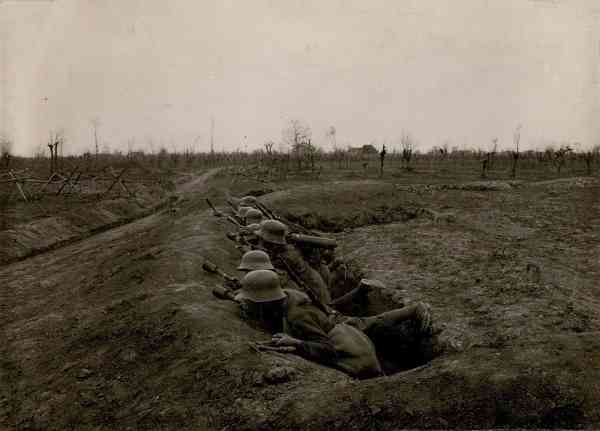
Stoßtruppen or Storm Troopers, a new tactical concept, proved to be just a temporary success. Photo National Library of Austria
As mentioned, the French strategic leaders were initially decreasing combat power in the vicinity of Verdun, as they regarded it as of less importance. Nonetheless, the German progress struck a nerve with French forces on the spot, and consequently the French used their limited firepower to defend Verdun to the extreme.[21] General Philippe Pétain extended the French defences, regained the initiative, and forced Falkenhayn to change tactics by replacing the Storm Troopers by mass armies. The latter was certainly not beneficial to Germany with its scarce resources, but it got worse. Verdun became the symbol of French tenacity, defended by the French Army without any support from its Allies. It was a huge effort for the French Army. Despite Pétain’s plan of rotating divisions between front and rear areas, the French soldiers were psychologically as well as physically exhausted.[22]
Regarding Verdun, the moral is that just fighting for the sake of fighting can generate negative strategic side effects, like the unnecessary and unexpected loss of resources as shown at Verdun, and thus be a moral boost for the opponent. Tactical innovation, like the use of Storm Troopers to break the deadlock of trench warfare, could not compensate these negative strategic side effects. These examples demonstrate the importance of the link between the strategic and tactical level.
The British Sinai and Palestine Campaign (1915-1918)
Where military commanders in Europe at the Eastern and Western front were struggling with the non-existing operational level, British leadership in the Middle East showed another picture. Although the British Sinai and Palestine Campaign looked very well organized from the outside, it was not all bright and shiny. On December 9, 1917, British general Edmund Allenby took the Holy City of Jerusalem by order of the British Prime Minister.[23] It was meant as a Christmas present to the people of the Commonwealth: it was the first British victory since the outbreak of the Great War and, consequently, enhanced British confidence in their army and the determination to prevail. Allenby’s approach was different and is worthwhile to draw attention to.
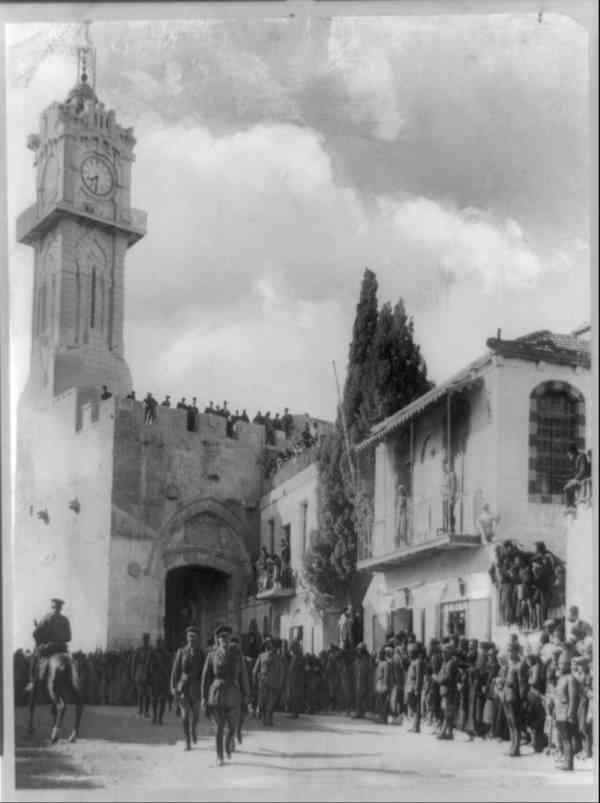
General Edmund Allenby enters Jerusalem: he divided his operations in several phases with decisive points, which may be seen as a precursor of a campaign plan. Photo Library of Congress
General Allenby’s leadership demonstrated a significant difference with that of his contemporaries in France. Based upon his experiences at the Western Front, he understood that the strategic leader could not attain complete knowledge of the many facts influencing the theatre, including the battlefield. Therefore, his plan was to divide his operations in several phases with decisive points, which may be seen as a precursor of a campaign plan, tending towards operational art, the art of warfare at the operational level. Furthermore, Allenby was gifted with a sense for operational leadership, sensing when he needed to control details or when to issue only the outlines of his plan. The latter was closely linked with his confidence in his subordinate commanders, and to the way he could handle uncertainties. So, besides knowledge about operational art, directing a successful campaign also depended on the right leadership skills.
Allenby was increasingly involved in setting the preconditions for the attack on the Ottoman defensive stronghold of Beersheba in the Palestinian desert.[24] This was understandable because Beersheba was a crucial location for the British water supply and transport of the British formations. Eventually, for the attack on Jaffa and Jerusalem, Allenby provided his junior commanders with broadly defined guidelines, thus demonstrating confidence in their knowledge and abilities.[25] Although it is just one example, Allenby’s role and responsibility justifies two fascinating observations. First, a level between the Grand Strategy of a nation and the execution of battles is necessary. Allenby’s management of the campaign made clear that a certain level in the military chain of command, later known as the operational level, needs to translate the usually widely formulated Grand Strategy into manageable tactical military assognments. Second, the military leader at the operational level has to take the long view with a thorough understanding of the strategic ends, and must not fall into the trap of paternalism and interference at the tactical level. It seemed that Allenby did have the accurate competencies for the operational level, and consequently he considered his battles well. To him it was not ‘just another battle’, and he gave the British people an exclusive Christmas present in the shape of an enormous moral boost.
Lessons learnt for contemporary strategic leaders
In 1914, the strategic military leaders were inexperienced concerning how to run a war, although they realized that the upcoming war would have a different character than previous wars between European powers.[26] As stated before, they faced mass armies, new technology, and conflicting interests with allies and the fallacies in their own planning. The military leaders had to deal with these challenges, but were not able to understand that this was far too much to handle. An additional level could have been of added value, and consequently have set the conditions for the tactical level. It was not until April 3, 1918 that the Allies appointed marshal Ferdinand Foch commander of all the armies at the Western Front and introduced a level equivalent to the current operational level.[27]
A German operational level never came into being, not even during the Second World War. The German Blitzkrieg concept in the 1940s was not effective because of the operational level, although the Germans were initially very successful during their Western campaign, winning several tactical battles. However, during the Second World War the German tactical plans were not synchronized, there was no operational design, and the successes came from opportunism, fierce fighting and sometimes the application of Auftragstaktik, the German precursor of Mission Command.
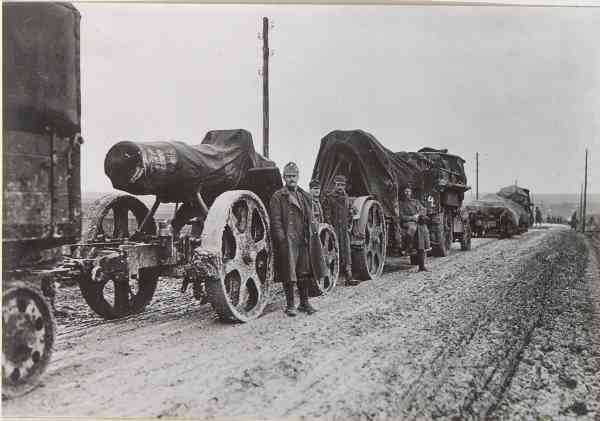
A unit of the German Südarmee underway with mortars: during the Great War, a German operational level never came into being. National Library of Austria
Current strategic military leaders have to recognize that the operational level in a specific theater can tackle the challenges without the intrusion of the overall strategic level. In contrast, overall strategic leaders should intervene when the operational level directs the execution of just another battle not linked to the strategic objective and is therefore irrelevant. Contemporary technical potential is not an excuse for complying with this situation. Furthermore, current strategic leaders have to promote creativity within the strategic and operational levels because the methodical approach as applied by Falkenhayn, Ludendorff, and Haig was unsuccessful. It was not aligned with strategy, and caused an abundant amount of fatalities. Strategic leaders need to comprehend that they sometimes have to make plans that might lead to a lot of casualties. Casualty avoidance cannot always be guaranteed. The ultimate sacrifice of soldiers is justified, but only when national interests are high and when the fighting is part of an overall strategy. If that is not the case, than the late lieutenant Wilfred Owen was right: to perish in ‘just another battle’ is still the ‘Old Lie’.[28]
* Currently, the author is Chief of the Directorate for Operations’ Long Term Operational Planning within the Ministry of Defence (DOPS J5). Colonel Caelen graduated from the United States Army War College in 2018. Within the framework of this War College the author attended electives about strategy and leadership in the Great War which led to this article.
[1] Rienk Sijbrandi, ‘Never send a man, if you can send a bullet. De Diepe Operatie van de Brigade’, Militaire Spectator 187 (2018) (2) 60-63.
[2] Commander of the Netherlands Armed Forces, Netherlands Defence Doctrine (The Hague, June 2019) 28-29.
[3] Wilfred Owen, Dulce et Decorum Est pro Patria Mori (October 1917) see: www.warpoetry.uk/.
[4] Hew Strachan, The First World War (London, Simon and Schluster, 2003) 302-307.
[5] John Keegan, The First World War. An Illustrated History (London, Random House Limited, 2001) 118-119.
[6] Margaret MacMillan, The War that Ended Peace. The Road to 1914 (New York, Random House, 2013) 610.
[7] Erich von Falkenhayn, General Headquarters and its Critical Decisions, 1914-1916 (London, Hutchinson and Co., 1919) 193-239.
[8] Erich Ludendorff, My War Memories, 1914-1918, vol. II (London, Hutchinson and Co., 1919) 589-591.
[9] J.H. Boraston, ed., Sir Douglas Haig’s Despatches (London, J.M. Dent and Sons, 1919) 21-31.
[10] Strachan, The First World War, 43-44.
[11] Peter Paret, Makers of Modern Strategy, from Machiavelli to the Nuclear Age (Princeton, Princeton University Press, 1986) 522-525.
[12] Strachan, The First World War, 133.
[13] Keegan, The First World War, 146-147.
[14] MacMillan, The War that Ended Peace, 358-359.
[15] Ludendorff, My War Memories, 64-65.
[16] Keegan, The First World War, 147.
[17] Von Falkenhayn, General Headquarters and its Critical Decisions, 210-214.
[18] Keegan, The First World War, 257.
[19] Anthony Clayton, The Path of Glory. The French Army 1914-1918 (London, Wellington House, 2003) 96-97.
[20] Strachan, The First World War, 182.
[21] Paul Jankowski, ‘Verdun: The Endless Battle,’ The Historian (Summer 2016) 26.
[22] Clayton, The Path of Glory, 120-123.
[23] Keegan, The First World War, 327.
[24] Edmund Allenby, The Advance of the Egyptian Expeditionary Force (London, His Majesty’s Stationary Office, 1919) 2.
[25] Ibid., 7-9.
[26] Strachan, The First World War, 43-44.
[27] Ibid., 301.
[28] Owen, Dulce et Decorum Est pro Patria Mori.